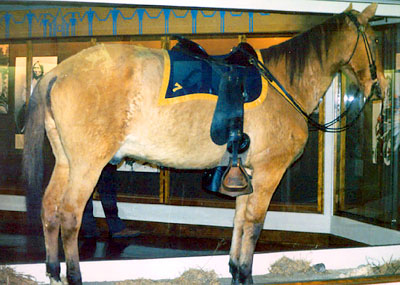

2nd Cavalry, and Texas Rangers under Sul Ross would claim that at the end of the battle, he wounded Nocona, who was thereafter killed by Spangler’s Mexican servant. John Spangler, who commanded Company H of the U.S. In December 1860, Cynthia Ann and Topsana were captured in the battle of Pease River. Nadua and Nocona also had another son, Pecos (sometimes known as “Peanuts”), and a daughter, Topsana (“Prairie Flower”). For what it’s worth, Quanah would later write in a letter to rancher Charles Goodnight, “From the best information I have, I was born about 1850 on Elk Creek just below the Wichita Mountains.” Alternative sources cite his birthplace as Laguna Sabinas or Cedar Lake in Gaines County, Texas. Nadua and Nocona’s first child was Quanah or Kwana, born in the Wichita Mountains of southwestern Oklahoma in 1845, 1850 or 1852 depending on which history you believe. Quanah’s paternal grandfather was the renowned chief Puhihwikwasu’u (“Iron Jacket”), a warrior of the earlier Comanche-American Wars, famous among his people for wearing a Spanish coat of mail. Assimilated into the Comanche, Nadua Parker was married to the warrior chief Peta Nocona, also known as Noconie, Tah-con-ne-ah-pe-ah, Nocona or the “Lone Wanderer”. Given the Comanche name Nadua (“Foundling”), she was adopted into the Nokoni band of Comanches, as a foster daughter of Tabby-nocca. She was captured at age nine by Comanches during the raid of Fort Parker near present-day Groesbeck, Texas. Quanah Parker’s mother, Cynthia Ann Parker, was a member of the large Parker frontier family that settled in east Texas in the 1830s. Through her experiences as a horsewoman she found herself particularly fascinated with the connection between Comanche and Keogh, as well as times when the horse was central to life.Cynthia Ann Parker and her daughter, Topusana (Prairie Flower), in 1861. When she revisited it as an adult, a few years ago, she found an intriguing, complex story-of a horse and rider whose legacy grew beyond anything that was apparent in their lives. Janet Barrett remembers her father first telling her about Comanche when she was about eight years old, a simple story then about a horse that survived a battle. He became the most famous horse in America, Second Commanding Officer of the Seventh Cavalry, his presence helping to restore the cavalry's image of strength and courage.
#Comanche horse full
The soldiers brought him back to Fort Abraham Lincoln and nursed him back to full health. Yet, people took comfort in knowing that the brave Comanche had survived.

As grand July 4th celebrations began, news of the Little Bighorn disaster sent shock waves across the country. It was 1876, our country's 100th anniversary. The Indians left them be, Comanche standing alone on a battlefield covered with the dead. In death he continued to hold his horse's reins.

He was killed as he crouched under Comanche's front legs, firing his final shots. But the Indians remembered Keogh as the bravest man they had ever seen. No soldier survived that fight, not one of the 210 men under General Custer's command. The two rode together for the next eight years, a partnership that took them to the Battle of the Little Bighorn. Seventh Cavalry.Īt Fort Leavenworth, Kansas, among a shipment of Mustangs just in from Indian Territory, the captain saw the horse he wanted and took the unusual step of buying Comanche with his own money.

They took their talents elsewhere, Keogh coming to America to fight, first for the Union through more than 80 battles in the Civil War and then with the newly formed U.S. Keogh was one of the many Irishmen whose profession was soldiering but who would not fight under the English flag. Against the fury of the Civil War and the challenges of securing the frontier, the intertwined stories of the tough Mustang, Comanche, and the courageous soldier of fortune, Captain Myles Keogh, move toward a climax that spells the end for one and a beginning for the other.


 0 kommentar(er)
0 kommentar(er)
